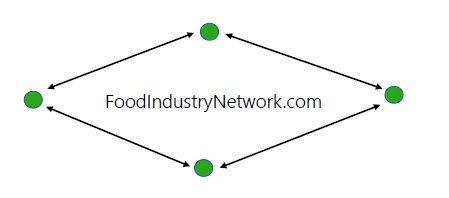TOP TAKEAWAYS
- Demand for consumables is pressuring margins, and inflation is also impacting costs
- Frozen foods for family meals are a key area of focus
- Private label sales growth has outpaced national brands for past 39 weeks
Inflation has become a two-edged sword for Dollar Tree, as consumers seeking bargains are driving sales and profit growth but rising costs and a shift toward lower-margin consumable items are expected to pressure margins in the near term.
In a conference call with investors discussing results for the fiscal third quarter on Thursday, executives at the Chesapeake, Va.-based retailer said shoppers are stepping up their purchases of grocery items, which are outpacing the growth of high-margin discretionary purchases.
As a result of that shift, combined with other rising cost pressures, such as freight, the company projected that its earnings for the full year would be in the “lower half” of its previously projected range of between $7.10 and $7.40 per share.
“The economy continues to pressure low and middle-income households, resulting in more needs-based purchases,” said Jeffrey Davis, who joined the company as chief financial officer in October. “We expect consumables to outpace discretionary, which negatively impacts gross margins.”
Third-quarter comparable-store consumables sales were up 9.3% at the Dollar Tree banner, and 4.7% at Family Dollar.
The company is seeking to combat the margin pressures in part by driving more sales per square foot, focusing on improving in-stock conditions, adding more shelving and making other assortment changes. Those include installing more coolers for both grab-and-go beverages and for perishable foods; rethinking the product mix in several categories, including frozen foods, and expanding private label assortments.
The retailer has been focused particularly on frozen items that meet the needs of families, said Mike Witynski, president and CEO.
“We are aggressively expanding our [frozen] proteins, pizza, breakfast items and family sizes at price points that meet their budgets,” he said.
Implementing variable pricing, including $3 and $5 items, has helped drive sales and margins in the frozen food categories in particular, Witynski said.
In private label, the company is focusing in on expanding assortment in three broad categories: health and over-the-counter medications, everyday food items, and paper products.
Private label sales growth has outpaced national brands for the past 39 weeks, Witynski said, noting that such a long stretch has not occurred for several years prior. The retailer is also seeing gains in SNAP purchases.
Despite the increasing pressures, the company’s third-quarter financial results remained positive. Net income for the 13-week third period, which ended Oct. 29, was up 23.1%, to $266.9 million, on an 8.1% increase in sales, to about $6.9 billion.
Overall same store sales were up 6.5% across the enterprise, which included gains of 8.6% at the Dollar Tree banner and 4.1% at Family Dollar.
Through the first three quarters, net income rose 33%, to nearly $1.2 billion, on sales gains of 7.1%, to $20.6 billion.
“Shoppers are responding to our new value proposition at Family Dollar and Dollar Tree as we focus on driving both traffic and store productivity,” said Witynski.


